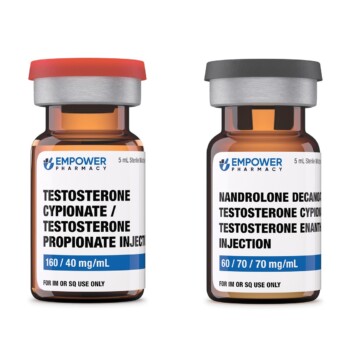Article Summary
Getting quality sleep is crucial for long-term health, prompting many to seek melatonin. Compounded melatonin from Empower Pharmacy offers customizable solutions, ensuring accurate dosing and strengthening patient-provider relationships.A good night’s sleep can change everything – mood, work efficiency, you name it. Regularly getting a good night’s sleep is even better for long-term health. That’s why plenty of people turn to melatonin because they believe it will help them sleep longer and with less interruption. Some prefer over-the-counter melatonin, but while OTC melatonin products are easy to obtain, research and recent news articles show that what’s on the label isn’t always what’s inside.[1][4][5] However, compounded melatonin can be a more reliable option and put providers and patients at ease.
Benefits of Customized Melatonin Capsules
Empower Pharmacy offers compounded melatonin solutions that can be tailored to a patient and in varieties not found in common OTC products. The melatonin is available in capsules, in slow-release and immediate-release forms, and a wide range of strengths. Not only that but it is compounded in a state-of-the-art pharmaceutical facility to deliver accurate dosing. And because we can take it a step further and customize when necessary, providers have multiple options when prescribing melatonin to address their patients’ needs.
A secondary benefit of compounded melatonin is an enhanced patient-provider relationship. Patients can be reassured that their melatonin was prescribed by a licensed provider and that their prescription was filled by compounding experts. So, what patients see on the label is what’s inside, every time.
Melatonin Uses
The most common reason why people take melatonin is to help them with sleep.[2] In fact, melatonin is the fourth most popular natural product taken by American adults.[1]
Melatonin is a hormone in the body that’s connected to sleep patterns. Its levels tend to decrease with age.[2] When patients take melatonin, the hormone seems to regulate their internal “sleep clocks” to help them fall asleep faster and possibly stay asleep longer. That’s why it’s especially effective in treating jet lag and insomnia.[3]
In addition to jet lag and insomnia, taking melatonin may also help regulate sleep disturbances in some people due to depression or rotating shift work.[3]
The provider-patient relationship is key when determining whether a patient should be prescribed melatonin and, if so, in what dosage level.
- Grigg-Damberger, M., & Ianakieva, D. (2017). Poor Quality Control of Over-the-Counter Melatonin: What They Say Is Often Not What You Get. Journal of Clinical Sleep Medicine, 13(02), 163–165. https://doi.org/10.5664/jcsm.6434
- Brooks, M. (2023, April 27). Majority of Melatonin Gummies in the US Inaccurately Labeled. Medscape. https://www.medscape.com/viewarticle/991215
- George, J. (2023, April 25). Melatonin Gummies May Not Be What They Claim to Be. MedPage Today. https://www.medpagetoday.com/neurology/sleepdisorders/104179
- Melatonin. (2021, March 3). Mayo Clinic. https://www.mayoclinic.org/drugs-supplements-melatonin/art-20363071
- Jet lag disorder – Diagnosis and treatment – Mayo Clinic. (2022, November 19). https://www.mayoclinic.org/diseases-conditions/jet-lag/diagnosis-treatment/drc-20374031



